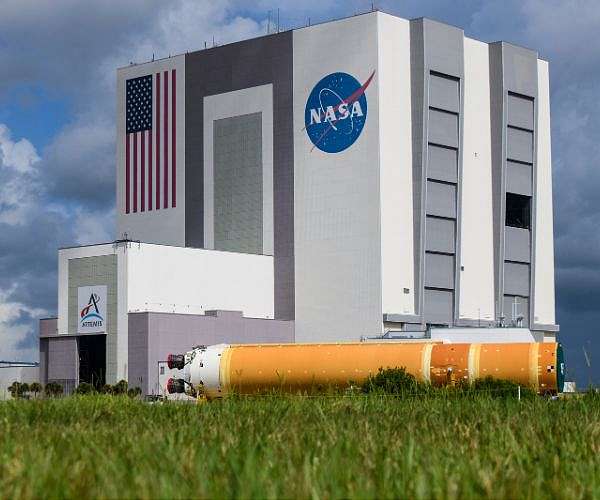Writing an Essay About NASA’s Greatest Achievements: A Student’s Guide
by Clarence Oxford
Los Angeles CA (SPX) Jul 03, 2025
NASA-the National Aeronautics and Space Administration-has stood as a beacon of innovation, exploration, and scientific discovery since 1958. With a track record of incredible achievements ranging from Moon landings to Mars exploration and groundbreaking telescopic discoveries, NASA’s contributions have shaped both our understanding of the universe and the advancement of technology on Earth.
Writing an essay on such a wide-reaching topic presents an exciting opportunity for students. However, the sheer scope of NASA’s work can make it difficult to narrow your focus and present a cohesive argument. This is where many students seek essay writing help to better plan their structure and refine their points. Services like MyAssignmentHelp (when used ethically) can assist students through researching NASA’s accomplishments and crafting a compelling narrative around them.
Step 1: Choose the Right Angle
NASA’s history spans decades and includes a wide range of missions and innovations. A strong essay isn’t just a list of events; it’s a focused narrative that connects milestones to broader scientific or cultural outcomes. Start by choosing an angle:
+ Historical Perspective: Trace NASA’s progression from Mercury to Artemis.
+ Technological Milestones: Explore engineering breakthroughs like the Space Shuttle or the James Webb Space Telescope.
+ Scientific Discoveries: Discuss planetary science, black holes, or Earth observation.
+ Cultural and Global Impact: Analyze how NASA’s missions influenced politics, education, or public imagination.
Your thesis should reflect this angle clearly. For instance: “NASA’s achievements, from the Moon landing to Mars exploration, have transformed not only our understanding of the universe but also how humanity perceives its place in it.”
Step 2: Highlight Key Achievements
Below are some of NASA’s most celebrated milestones to consider:
1. Apollo 11 Moon Landing (1969)
Arguably NASA’s most iconic moment, the Apollo 11 mission marked the first time humans walked on the Moon. Neil Armstrong’s famous words, “That’s one small step for man, one giant leap for mankind,” became a symbol of human innovation. The success of this mission was not just technological-it carried immense geopolitical significance during the Cold War.
2. Mars Rovers (Spirit, Opportunity, Curiosity, Perseverance)
NASA’s Mars rover missions have yielded groundbreaking insights into the Red Planet’s geology, atmosphere, and potential for life. Curiosity and Perseverance, in particular, have helped uncover evidence of ancient riverbeds, analyze soil samples, and pave the way for future human exploration.
3. The Hubble Space Telescope (1990-Present)
Hubble has revolutionized our understanding of the cosmos. From capturing the birth of stars to providing evidence of dark energy, this space telescope has delivered images and data that textbooks will reference for centuries.
4. International Space Station (ISS) Contributions
While the ISS is a collaborative effort, NASA’s role has been central. American astronauts have conducted critical research aboard the station, studying everything from bone density in microgravity to fluid dynamics and combustion in space.
5. James Webb Space Telescope (2021 Launch)
Dubbed Hubble’s successor, the James Webb Space Telescope (JWST) is now offering even deeper glimpses into the early universe. Its ability to detect infrared light allows astronomers to observe galaxies formed shortly after the Big Bang.
You don’t need to include all of these in your essay. Instead, select 2-3 that align with your thesis and provide in-depth analysis and context.
Step 3: Build a Strong Essay Structure
An effective essay needs a clear structure. Here’s a proven format:
Introduction
Start with a hook-perhaps a famous quote, a mind-blowing statistic, or a provocative question. Introduce your focus, give a brief overview of NASA’s history, and end with a strong thesis statement.
Body Paragraphs
Each paragraph should center around a single achievement or theme. Use reliable sources-NASA’s official archives, scientific journals, and expert interviews. Incorporate dates, mission names, and direct outcomes to ground your argument.
Example structure:
Paragraph 1: Apollo 11 and its global significance
Paragraph 2: Hubble’s impact on cosmology
Paragraph 3: The Mars Rovers and what they’ve taught us about planetary science
Use transitions to link your ideas and maintain flow.
Conclusion
Restate your thesis in a fresh way. Briefly summarize your main points and end with a forward-looking insight. You might discuss upcoming missions like Artemis or speculate on the future of human settlement on Mars.
Step 4: Use Reliable Sources
Accuracy is key in a topic as fact-driven as NASA’s achievements. Reference:
+ NASA.gov
+ Scientific journals (e.g., Nature, Astrophysical Journal)
+ News outlets like SpaceDaily.com or Scientific American
+ Peer-reviewed academic articles
Be sure to cite everything properly, following the format your instructor or institution requires (APA, MLA, Chicago, etc.).
Final Thoughts
Writing an essay about NASA’s greatest achievements is not just an academic task-it’s an invitation to engage with some of humanity’s most inspiring moments. Whether you’re fascinated by the Moon landing or intrigued by future missions to Mars, your essay can reflect your unique curiosity and analytical skills.
Remember to stay focused, back up your points with solid evidence, and write with passion. With the right structure and a little help along the way, you’ll not only complete your essay-you’ll understand why NASA’s legacy continues to reach for the stars.
Related Links
MyAssignmentHelp
Space Tourism, Space Transport and Space Exploration News

